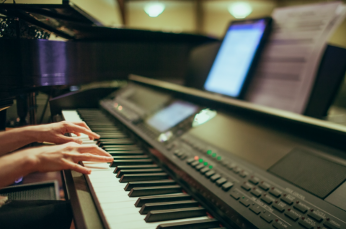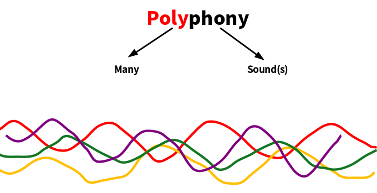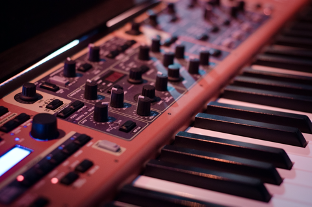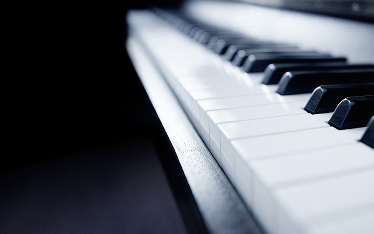There’s a lot that goes into the decision of buying the best digital piano. For instance, are you looking to buy a fully-fledged digital piano or simply want a portable 61-key keyboard? Are you interested in something portable to carry around when you’re invited to gigs or do you want a larger stage version? How about sound quality, polyphony, and the actual keyboard?
These are just a few of the many questions you’ll need to ask yourself as you work on your budget to find the best digital piano that suits your unique needs.
In this post, we look at the most important things you need to consider before buying a digital piano. The goal is to help you make a more informed buying decision when shopping for a digital piano that meets your needs and budget.
This list is by no means completely exhaustive but you can consider it as a guide to help you decide which type of digital piano should work best for you.
So, without much ado, here are the five key things to consider if you’re in the market for a digital piano.
1. Sound Quality
While this may sound like a very obvious factor, you need to pay close attention to the sound your preferred digital piano produces. Some of the things to consider in terms of sound quality are the tune of the piano and its speakers.
If you’re a beginner, you may not really need high-end tones and sounds at first. But if you have a higher budget, the better tones you get the better sound quality you’ll have. Better tune quality will also help you to improve your skills.

Speakers are also important to consider because they are the primary sound output of the digital piano. However, keep in mind the output will also depend on how you play. Just make sure that the speakers are of decent quality. Their size and power will influence sound output.
2. Polyphony
Polyphony is basically the number of tones or notes the digital piano can produce at once. It’s the number of notes you can play at once without getting cut off early.
Basic digital pianos start with a 32-note polyphony. High-end models have as high as 200 notes. At the very least, go for a 32-note polyphony digital piano but a 64-note model will be more than adequate, especially if you want to produce more complex sounds.

The most basic models start with a polyphony of 32 notes, and it ranges up to more than 200 for the best models. Make sure that the digital piano you choose has enough polyphony, whether you’re buying it as a beginner or experienced keyboard player.
3. Features
Regardless of your budget, if you want to get the most out of your digital piano investment, check all the features available in the instrument.

Features will help you to determine if the digital piano is worth the expense and whether it suits your needs or not. The piano should have features that allow you to switch between different sounds when you play live on stage.
Some of the key features to look for in a good digital piano worth its price include:
- Metronome
- Split mode
- Dual mode
- Recording and playback
- Accompaniment function
- Transposing, tuning, and octave shifting
- And a wide range of sound effects such as chorus, delay, and reverb just to mention a few.
The more features you have in a digital piano, the better your playing will get and the more professional you’ll become.
4. Portability
Portability is another important factor to consider in your choice of a digital piano. For instance, if you’re a gigging musician planning to move to different venues and functions with your digital piano, then go for a lightweight compact instrument that is easy to carry around.
If you need a digital piano for home use, you have the freedom to purchase a heavy-weight model but keep in mind the amount of space available in your home.
When it comes to portability considerations, there are four major styles of digital pianos, namely vertical, portable, contemporary, and stage pianos. Vertical pianos have a similar appearance to the acoustic piano. Their speakers are usually placed on the stand’s case.
Contemporary styles look like the standard keyboard while portable pianos have a compact design and easy to carry around. Digital stage pianos are designed for professional performers and normally require louder or bigger speaker systems.
5. The Digital Piano’s Keyboard
Whichever digital piano you choose, make sure that its key press feels as close as possible to the keys of an acoustic piano even if it doesn’t come with hammers and strings.
Digital piano manufacturers use weighted action to provide you with this key press feel. Weighted action makes the keys feel like the ones on an acoustic piano. If the keyboard of your digital piano doesn’t come with weighted keys, it will sound more like a typical organ.

For the best output and keyboard performance consider buying a digital piano with fully weighted keys. The number of keys also matters. Acoustic pianos normally come with 36 black keys and 52 white keys.
So, when you’re shopping for a digital piano that can produce the same quality and versatility of an acoustic piano, look for a fully weighted 88 keys model. An 88-key digital piano allows you to play every style you want. Avoid a digital piano with a keyboard that gives you less than 5 full octaves.
Final Thoughts
A digital keyboard is a great instrument to have whether you’re a budding or professional musician. However, with the numerous options available on the market today, you may get confused about which model to invest in.
To help you make an informed decision consider the factors discussed above while shopping for the best digital piano. Check the instruments sound quality, polyphony, available features, its portability, and its keyboard. We recommend investing in a portable fully weighted 88 keys digital piano with features such as metronome, transposing, dual-mode, split mode, recording, and playback.
Buying a digital keyboard is a huge investment so make sure that you only purchase a model that best suits your needs and budget.